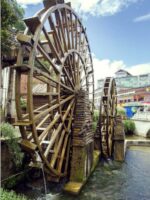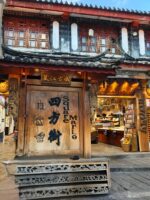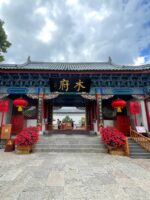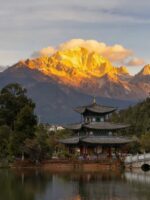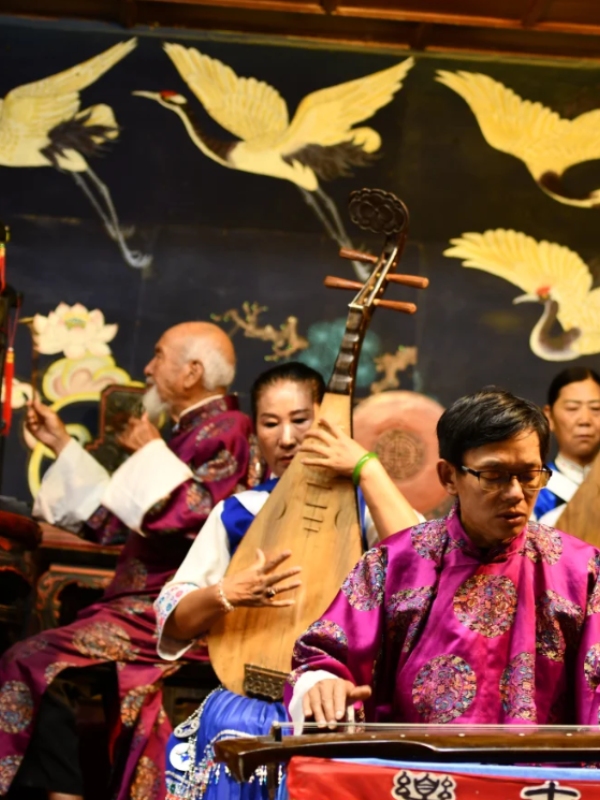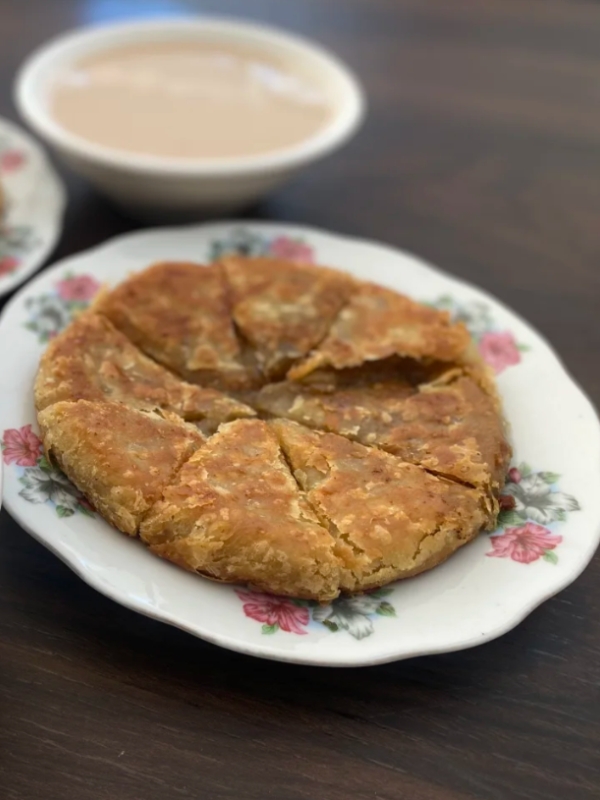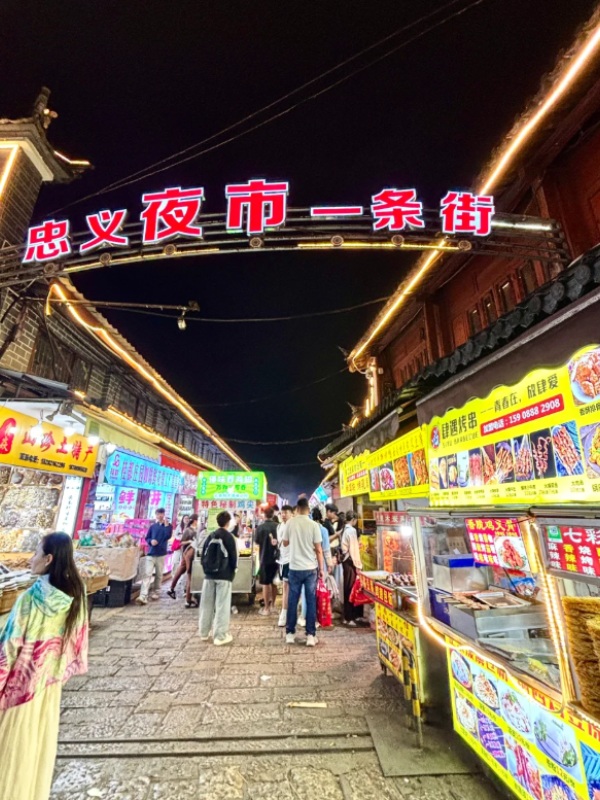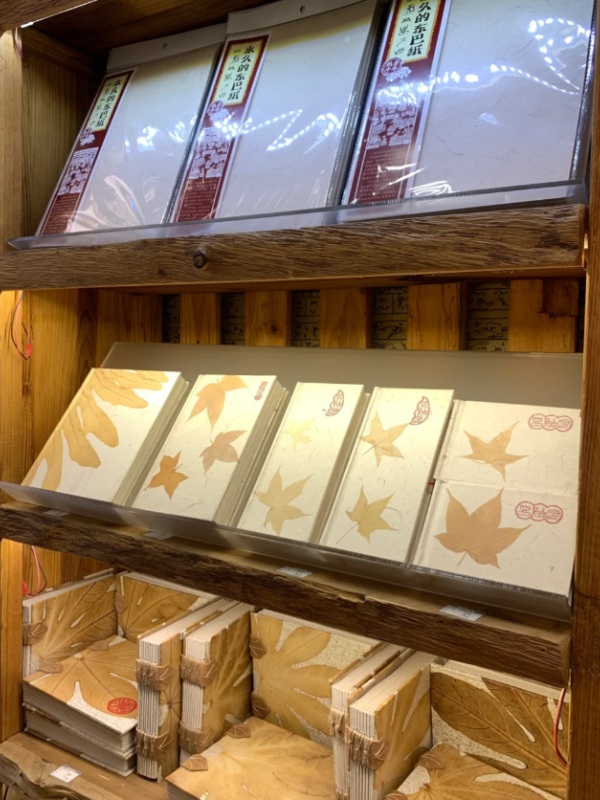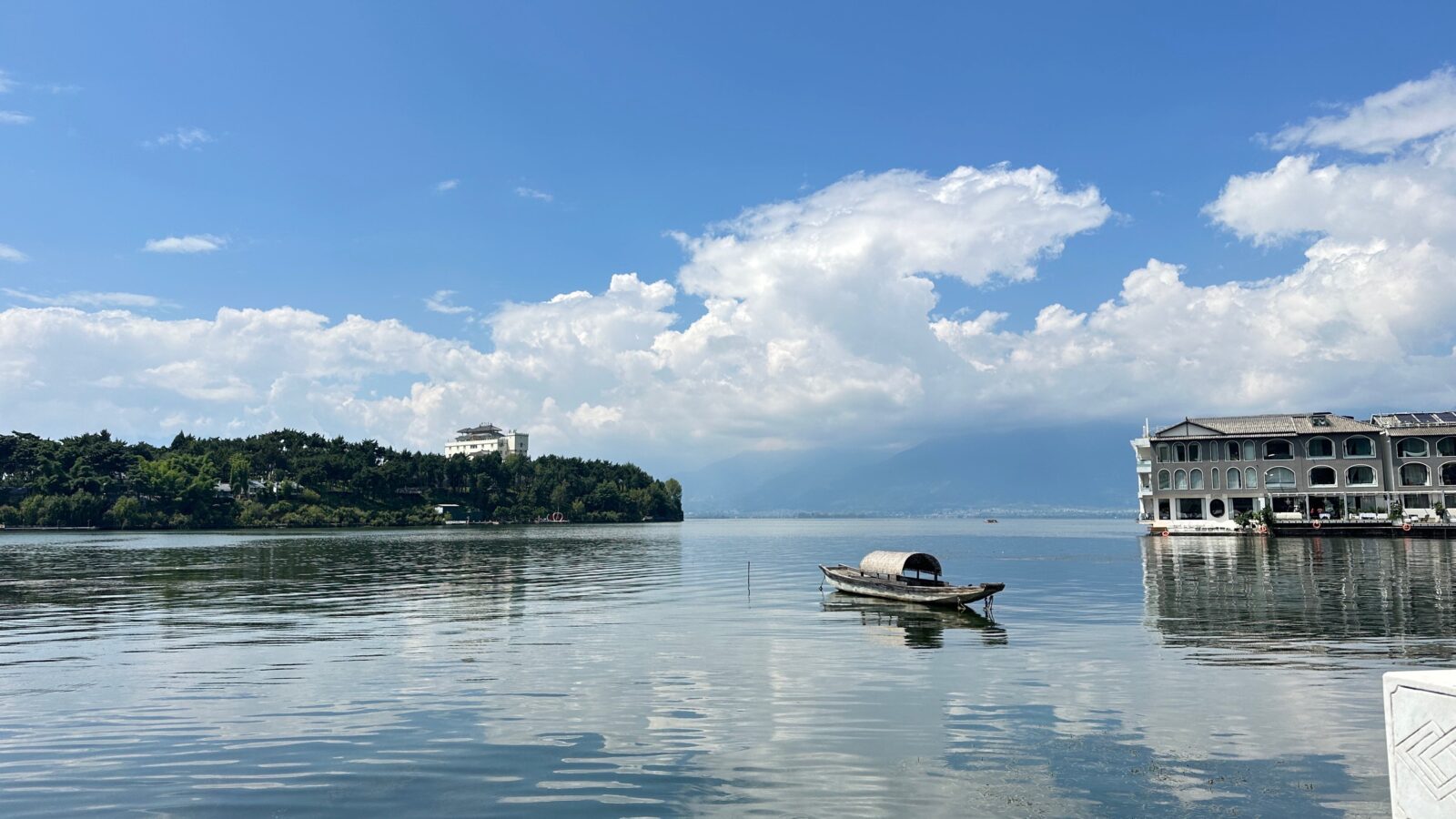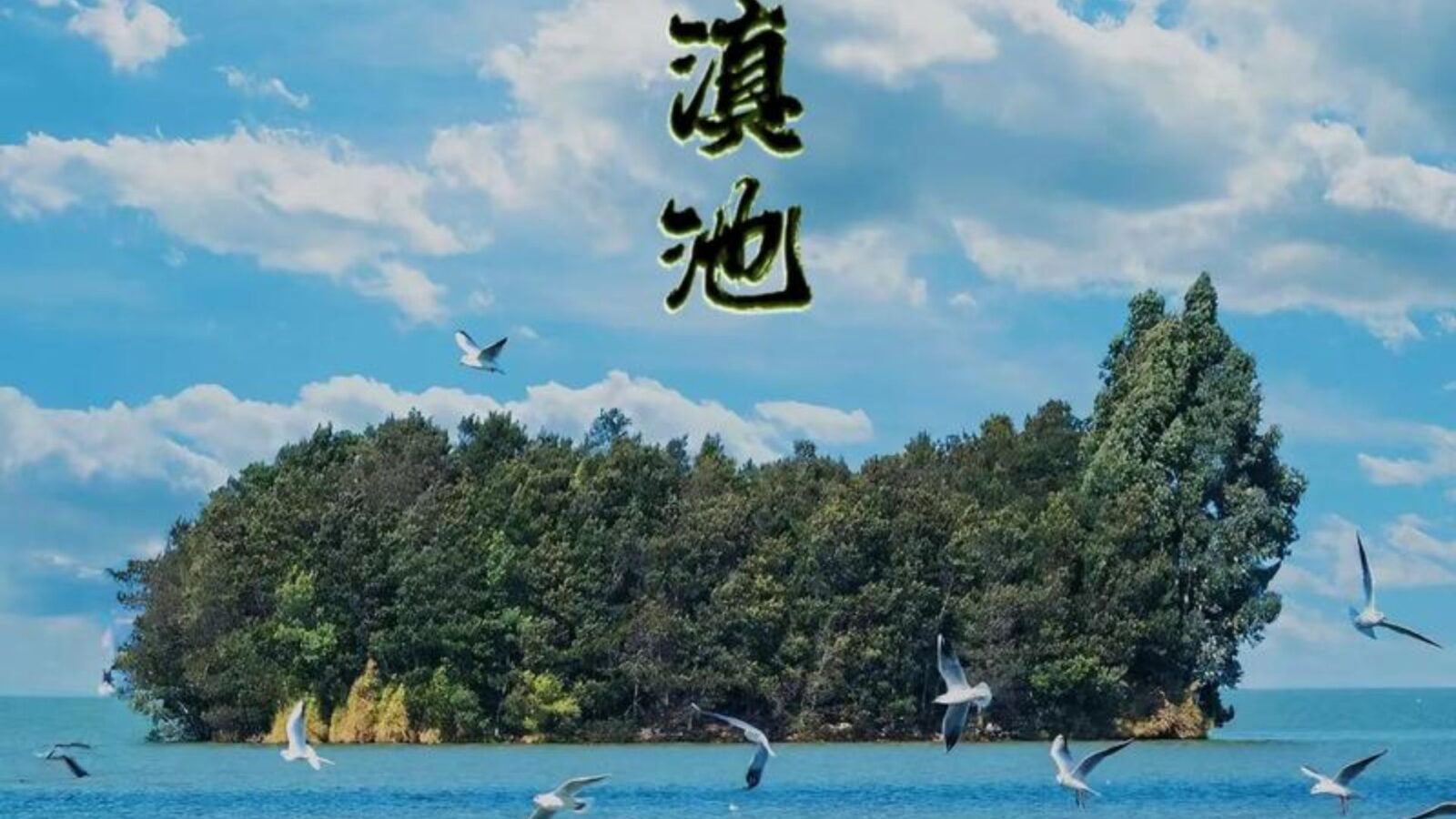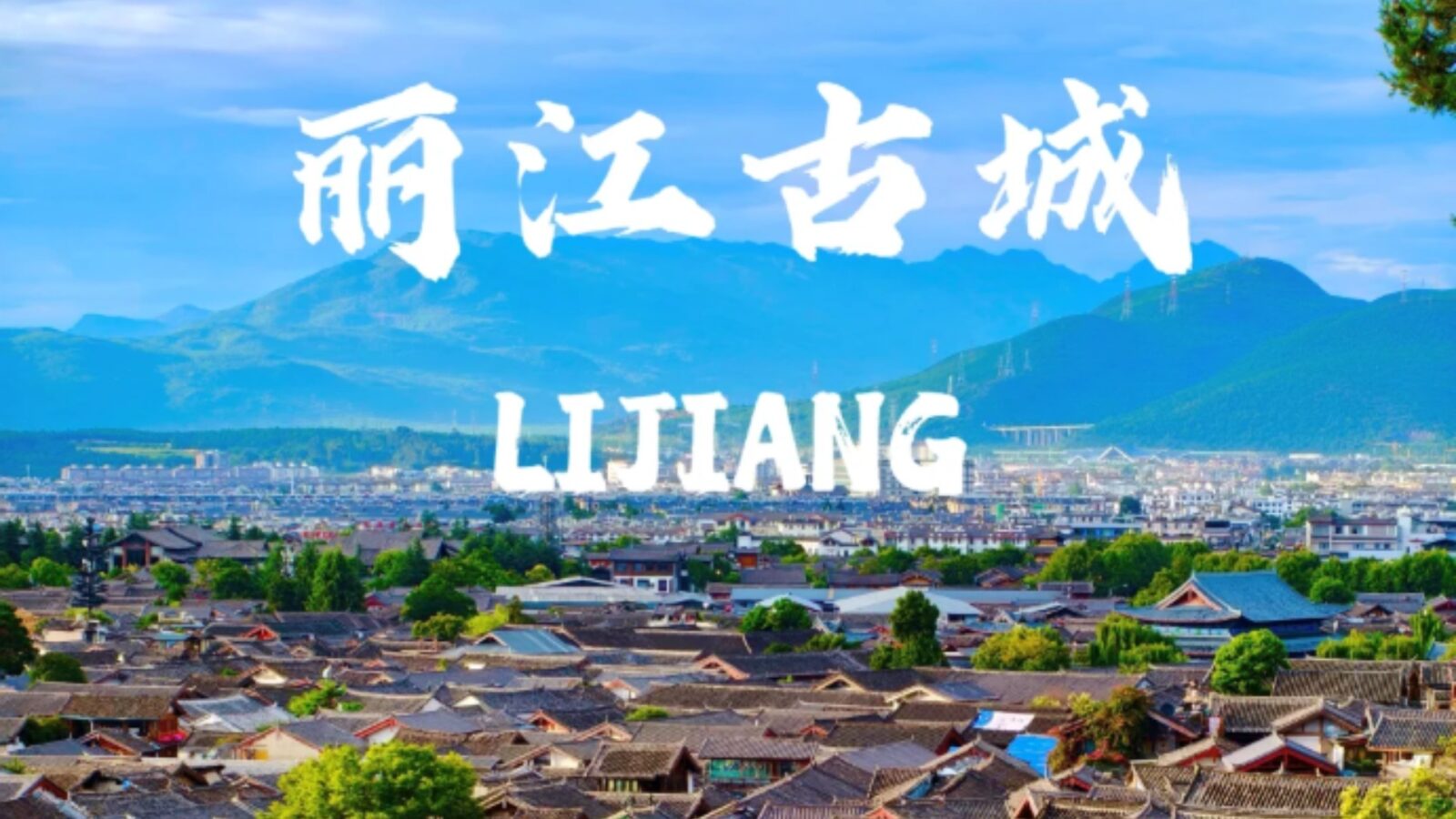
Lijiang Old Town
Lijiang Old Town, located at 2,400 meters in northwest Yunnan, is more than simply a UNESCO World Heritage Site; it's a living tapestry woven from 800 years of Naxi history and the Tea Horse Road's legacy. Ming Dynasty cobblestones lead past antique water wheels that hum beside craft beer bars, while historic canals transport mountain spring water past WiFi-equipped cafés.
Instead of just listing views, I'll give insider information that I wish I'd known before my trip, such as how to quickly overcome altitude sickness, where locals get their morning snacks, which "handmade" goods are genuinely worth purchasing, and the little cultural faux pas that might make you feel embarrassed. I'll even reveal the week-long blunders I made, allowing you to avoid the difficulties and plunge right into Lijiang's actual appeal.
Lijiang Old Town Essential Facts
| Category | Details |
|---|---|
| 📍 Location | Northwest Yunnan, about 500 km from Kunming; core area is Dayan Old Town, the main tourist center among three UNESCO-listed settlements. |
| 🏔️ Altitude | 2,400 meters — higher than most expect, proper acclimation is essential. |
| ⚠️ Altitude Sickness Tips | Around 40% experience mild symptoms (dizziness, headache) by evening. Drink 2–3L water daily, avoid alcohol on day 1, and take it slow (skip Jade Dragon Snow Mountain on day 1). Local pharmacies offer OTC medication. |
| 🏛️ Historical & Cultural Core | Founded in the late Song/early Yuan (~800 years ago); a vital hub of the Tea Horse Road. Predominantly Naxi, blending Naxi, Han, Tibetan, and Bai cultures. Designated UNESCO World Heritage Site (1997) and National 5A Scenic Spot. |
So Many Streets, So Little Time — Lijiang’s Must-See Spots
North Gate Water Wheels — The Famous Photo Stop With Hidden Traps
The massive water wheels at the North Gate mark the entrance to Lijiang Old Town, serving more as decorative icons than historical relics. The best time to visit is early morning between 6:30–7:30 AM, when the wooden structure glows in soft light before the crowds rush in. By 9:00 AM, the square becomes a frenzy of tourists snapping identical Naxi-style photos, while nearby stalls begin inflating prices to catch the early rush.
Skip the overpriced shops near the gate—bracelets tagged at 380 RMB are usually 120 RMB deeper inside. If convenience matters most, staying around the North Gate area keeps you close to main attractions and airport shuttles. Early walks here still feel peaceful, with shopkeepers rolling up doors and the scent of breakfast drifting through quiet alleys.
Don’t let bad weather ruin your Yunnan trip—read Yunnan Weather Guide: Best Time to Visit Yunnan for Your Tour and plan ahead.
Sifang Street — Where Old Trade Meets New Nightlife
Sifang Street has anchored Lijiang’s trade for 500 years, its red-wood houses and stone lanes echoing the footsteps of ancient Tea Horse Road caravans. By day, Naxi dance performances fill the square with rhythm and color; by night, bar lights and music spill into the streets. Visit around 4:00 PM to catch the cultural pulse, then return after 8:00 PM to feel the shift into neon energy that defines the town’s modern vibe.
For a smoother experience, enter from Qiyi Street to skip the crowds and enjoy local eats like Lijiang baba and yak skewers at small family-run spots. If you linger later, you’ll see performers sharing tea with locals as music fades—a quiet moment that reveals the slower heartbeat beneath Lijiang’s tourist bustle.
Mufu Mansion — History and Architecture Worth the Ticket
The Mufu Mansion, once home to Naxi rulers, feels like a pocket-sized Forbidden City. Its 46,000 square meters of courtyards and halls blend Han and Naxi styles beautifully. Though the 60 RMB ticket may seem high, the detailed woodwork and peaceful gardens make it worthwhile. Visit around 10:00 AM when sunlight paints the terraces gold, and local guides outside share Naxi legends for 50 RMB.
If you’re short on time, you can skip it, but architecture lovers shouldn’t. English signs are limited, so bring a translation app. Most people spend about an hour wandering through shaded halls where Lijiang’s history still lingers.
If you’re heading from Black Dragon Pool to Jade Dragon Snow Mountain, Jade Dragon Snow Mountain: A Naxi Prophecy Hidden in the Clouds, Where Every Snowflake Tells a Story will help you map it out.
Black Dragon Pool — The Perfect Morning Reflection (If You’re Lucky)
At Lijiang’s north edge, Black Dragon Pool perfectly mirrors Jade Dragon Snow Mountain on calm mornings. Arrive before 8:00 AM for postcard reflections before the breeze ripples the water. Entry is 80 RMB, covering nearby pavilions and gardens.
In winter, the pool may dry up, so check Trip.com or TripAdvisor for updates. When full, it’s breathtaking—painters still gather to capture that timeless scene where mountain and water meet in perfect silence.
Want That Perfect Rooftop Shot? Here’s Where to Go
- Wangu Tower
- Lion Hill
Lion Hill (Wangu Tower) — The Classic View From Above
Lion Hill rises just behind the ancient town, giving a 360° panoramic view of rooftops and Jade Dragon Snow Mountain. The climb takes 30 minutes, with pine-scented paths and a 50 RMB entrance fee for Wangu Tower at the summit. Early risers catch soft sunrise light that slowly brightens the tiled roofs below. Bring a jacket; mornings can be cold and windy.
By sunset, golden light warms the rooftops, but expect small crowds. Around 6–7 p.m., photographers gather for the perfect shot. Despite more visitors, the scene remains peaceful, and the fee is worth the postcard view. Both sunrise and sunset showcase Lijiang’s timeless charm from this scenic perch.
Free Viewpoints — Where to See It All Without Paying a Cent
You don’t need to pay for every panorama. A stone bridge near southern Wuyi Street gives lovely elevated views, usually empty of tourists. Another free spot appears midway up Lion Hill, about a 15-minute climb before the ticket gate. From there, you still see much of the northern town spread below.
For a quieter look, head to Qiyi Street’s eastern end where small parks open toward rooftops. Locals often stroll here, and it’s perfect for relaxed photography. These free alternatives keep things casual—no fees, no rush—just Lijiang’s rooftops glowing in natural light.
Looking for Real Naxi Culture? Skip the Tourist Shows
- Naxi Ancient Music
- Impression Lijiang
- Dancing in Sifang Street
Naxi Ancient Music — A Rare Glimpse Into Centuries of Sound
Naxi Ancient Music preserves Ming Dynasty traditions with instruments from the 14th century. Founded by Xuan Ke in 1981, it features elderly musicians performing nightly at Naxi Concert Hall for 160–260 RMB. Their performance bridges modern Lijiang with centuries-old heritage.
Though I expected a tourist show, it felt surprisingly emotional. The musicians’ passion and precision created a deep connection to history. Many travelers describe the concert as an authentic and soulful experience, making it one of Lijiang’s most meaningful cultural nights.
Impression Lijiang (丽江印象) — Big Stage, Big Price, Little Soul
Directed by Zhang Yimou, this massive outdoor show at Jade Dragon Snow Mountain features hundreds of performers and dramatic lighting. Tickets cost 248–680 RMB, with transport adding 40–60 RMB. The visuals are stunning, using the mountains as a natural stage.
Yet it’s more spectacle than culture—grand but commercialized. The entire trip takes around five hours. If time or budget is tight, skip it and join the free evening dancing at Sifang Street for a more genuine feel of Naxi joy.
Everyday Culture — Dancing, Writing, and Real Local Life
At Sifang Street, locals gather for free circle dances around 7:30 p.m., pulling tourists in with cheerful energy. It’s informal, friendly, and feels authentically local—a perfect way to end your day.
In Baisha Ancient Town, small workshops teach Dongba script calligraphy for 60–80 RMB. This ancient pictographic writing still survives today. Wander further and you’ll find three-eye wells, old water systems that show how Naxi people once lived with ingenuity and harmony.
Hungry Yet? Here’s What and Where to Eat in Lijiang Old Town
- Lijiang baba
- Zhongyi Market
Naxi Dishes You Can’t Leave Without Trying
Naxi-style ribs hotpot (腊排骨火锅) blends smoked pork ribs with rich herbal broth. The meat falls off the bone, while locals add potatoes and mushrooms to the bubbling pot. Xiangshan Market has the best spots; expect 60–80 RMB per person.
Naxi roasted fish stuffed with herbs and grilled over charcoal defines local dining. Skip flashy places—Mama Fu’s Kitchen near Qiyi Street serves the real deal. The humble exterior hides perfectly crisp skin and smoky, tender flesh. Lijiang baba (丽江粑粑), a sweet or savory flatbread, fills the morning air with aroma. Sweet ones use brown sugar, while savory types have meat and scallions. Vendors near North Gate (7–11 a.m.) sell out fast, so go early.
Where Locals Eat — Cheaper, Tastier, Better
Food in Lijiang hits differently after sunset. Smoke, spice, and chatter rise from narrow lanes, drawing you into the rhythm of local life.
| Spot | Type | Hours | Average Cost | Highlights |
|---|---|---|---|---|
| Zhongyi Market | Night Market | 7–11 p.m. | 30–40 RMB | BBQ skewers, noodles, Naxi snacks; lively local vibe |
| Huama Street | Local Restaurants | All day | 25–50 RMB | Authentic non-touristy food; no English menu but worth it |
| Golden Kai Plaza | Modern Dining | 10 a.m.–10 p.m. | 50–100 RMB | Hotpot, Japanese, and comfort food chains; great after street eats |
Food Mistakes Most Tourists Make
Avoid Sifang Street eateries. You’ll pay 45 RMB for fried rice that’s worth 15. The view’s nice, but the food disappoints. Walk five minutes out—you’ll thank yourself.
Ignore “home-cooked Naxi meals” offers. They’re overpriced set menus costing 120–150 RMB per person, not real family homes. Real experiences only come via verified homestays.
Skip breakfast inside the old town. Cafés charge 35 RMB for bad lattes and stale pastries. Outside bakeries sell fresh bread at normal prices—your wallet and taste buds will both smile.
Don’t Get Scammed — How to Shop Smart in Lijiang
- Dongba paper
- Naxi embroidered shawls
Naxi Handicrafts — What’s Real and What’s Not
Dongba paper remains Lijiang’s proudest handmade craft. Made from local bark, it’s thick, textured, and said to last centuries. You’ll see artisans demonstrating the process in Baisha Ancient Town, selling notebooks for 30–100 RMB. It’s a meaningful souvenir, not a tourist gimmick.
Naxi embroidered shawls and silver jewelry are everywhere—but beware fakes. Real hand-stitched shawls start near 300 RMB, while cheap ones at 60–80 RMB are machine-made. As for “silver,” much of it’s plated copper. Always ask for a purity certificate or buy from official stores outside Old Town.
Where to Shop — Markets Locals Actually Use
Shopping in Lijiang isn’t just about souvenirs—it’s about stories. Every lane hides something handmade, slightly imperfect, and full of life.
| Spot | Type | Best Time | Average Cost | Highlights |
|---|---|---|---|---|
| Zhongyi Market | Local Market | Morning | Varies | Cheap fruits, snacks, clothes; half the price of Sifang Street |
| Wuyi Street | Shopping Street | Afternoon–Evening | Negotiable | Pottery, indie fashion; better deals than tourist areas |
What to Avoid — Overpriced Souvenirs and Tourist Traps
Avoid tourist bakeries pushing overpriced flower cakes—they’re dry and flavorless compared to local bakeries outside the walls. Real ones cost less and taste better.
Steer clear of “snow silver” jewelry or spirulina tablets claiming altitude benefits. Both are overhyped scams. Stick with verified crafts and certified shops—Lijiang rewards curiosity, not impulse buys.
Nights in Lijiang Old Town — Where Ancient Meets Electric

Bar Street
Bar Street (酒吧一条街) — Lively, Loud, and Worth a Look (Once)
The Bar Street lights up every night, turning ancient lanes into a glowing maze of music and color. Pop songs echo off wooden walls as promoters wave neon boards. The mix of tradition and chaos feels surreal yet oddly fun. Locals say the best time to visit is before 9 p.m., when the energy feels lively but not overwhelming.
Some bars balance noise with charm. Sakura House attracts foreign travelers seeking softer tunes. N’s Kitchen pairs cocktails with Western-style food, while Prague Café stays mellow with bookshelves and warm lighting. These cost slightly more but offer better vibes than the repetitive tourist clubs. Drop by once, then explore quieter alleys nearby for a genuine night view.
Night Photography — Capture the Glow Before It Fades
Rain adds magic to Lijiang nights. Lanterns reflect on wet stones, turning alleys into glowing rivers of red light. The best spots sit near small canals—especially around Mufu Mansion—where bridges frame shimmering reflections. Arrive just after sunset when crowds thin but lights stay bright.
To capture perfect shots, use a tripod or steady surface, keep ISO around 1600, and shoot near f/2.8 for clarity. Avoid main streets packed with tourists; instead, wander side paths near the water. That’s where Lijiang reveals its calm, cinematic beauty—quiet, reflective, and endlessly photogenic.
Beyond the Walls — Easy Day Trips Worth the Journey
Jade Dragon Snow Mountain (玉龙雪山) sits 30 kilometers north offering dramatic mountain scenery. The peak reaches 5,596 meters though cable cars take tourists to roughly 4,500-meter viewing platforms. Honestly, I found this attraction overrated compared to the hype and expense. Tickets cost 100 RMB plus cable car fees of 120-180 RMB plus required shuttle buses. The mountain often hides behind clouds making the expensive trip disappointing. Consider skipping this unless perfect weather guarantees clear views.
Tiger Leaping Gorge (虎跳峡) lies 60 kilometers away providing spectacular hiking opportunities. The Jinsha River cuts through narrow canyon walls creating dramatic scenery. A two-day trekking route follows the high trail above the gorge with guesthouse stops. Day visitors can reach viewpoints via bus from Lijiang for easier access. This destination rewards outdoor enthusiasts more than casual tourists. Thinking about heading to Tiger Leaping Gorge? Check Tiger Leaping Gorge Yunnan: A Hiking Guide for Nature Lovers before you go.
Lugu Lake (泸沽湖) requires 200 kilometers of mountain driving taking 4-5 hours each direction. The pristine alpine lake straddles the Yunnan-Sichuan border in Mosuo ethnic minority territory. This trip needs at least two days including overnight accommodation. The scenery justifies the long journey if you have extra time. The Mosuo walking marriage culture provides fascinating anthropological interest.
Lijiang Old Town Travel Hacks You’ll Wish You Knew Earlier
Getting Around — Transport Made Simple
Transportation is convenient but needs smart planning. The airport lies 28 kilometers away, and taking the shuttle bus (20 RMB) to the city terminal, then transferring to a taxi (10–15 RMB), is cheaper than a direct airport taxi (~80 RMB). Within the old town, walking is best, though you can rent electric scooters (30–50 RMB/day) for longer rides. For day trips, shared shuttles from guesthouses to Tiger Leaping Gorge or Lugu Lake cost 50–100 RMB and save the hassle of booking individual tickets.
Best Areas to Stay for Every Type of Traveler
Choosing accommodation depends on your priorities. For panoramic views, stay on Lion Hill or near Wangu Tower—Aman Dayan offers luxury, while Lan Jing Ge gives the same view at half the price. And for nightlife and convenience, pick hotels near Sifang Street or North Gate, though they can get noisy. For peace, guesthouses near Zhongyi Market offer an authentic local vibe and mornings filled with vendors’ calls. Always check for hot water, heating, and humidifiers if you’re visiting in winter.
Cultural Etiquette — Respect That Goes a Long Way
Respecting local taboos keeps your trip smooth and respectful. Never step over a home threshold or take photos without permission—especially of elders or monks. During Naxi circle dances, follow locals’ moves instead of joking around. At temples like Wenchang Palace, dress modestly and stay quiet. And never litter in the canals—they’re not just pretty but the “lifeblood” of Lijiang, carrying cultural and spiritual meaning.
FAQ - Common Questions About Lijiang Old Town (Shortened)
Q: Can you drink tap water in Lijiang Old Town?
No, tap water isn’t safe to drink directly. Locals boil it or buy bottled water for 2–3 RMB. Most hotels offer electric kettles and free boiled water. I drank boiled water without any issue. Bottled water remains cheap and convenient, and guesthouses often refill thermoses for guests.
Q: How many days do you need in Lijiang Old Town?
Two full days let you enjoy the main sights without stress. Three days allow a slower pace or a side trip to Shuhe or Baisha. I stayed five days and still found surprises, but two to three days are ideal for most travelers.
Q: Is Lijiang Old Town safe for solo female travelers?
Yes, it’s considered very safe. The old town has security cameras and police patrols. Many solo women feel comfortable walking around even at night, though Bar Street can get noisy after 11 p.m. Use normal precautions and avoid isolated areas late.
Q: What’s with the 50 RMB entrance fee?
The 50 RMB maintenance fee is inconsistently enforced. Guards check tickets mainly between 9 a.m.–6 p.m. Guests staying inside the walls often avoid payment, while day visitors may be stopped. Early mornings or late evenings usually mean no checks.
Q: Does Lijiang Old Town get too crowded?
Crowds peak on weekends and holidays. Early mornings before 10 a.m. are quiet, especially near Mufu Mansion’s south side. Avoid Sifang Street between 11 a.m.–5 p.m. Off-season (October–April) offers fewer tourists and calmer streets.
Q: Are there ATMs and do places accept credit cards?
Yes, ATMs like Bank of China and ICBC accept foreign cards. Most small shops prefer cash or mobile payments (WeChat, Alipay). Carry cash; only upscale hotels or restaurants take Visa or Mastercard.
Q: What if I feel altitude sickness?
At 2,400m, mild symptoms like headache or fatigue are common. Rest, hydrate, and avoid climbing higher. Pharmacies sell medicine, and ibuprofen helps headaches. If symptoms worsen, descend or seek help at a hospital immediately.
Q: Can I visit Lijiang Old Town in winter?
Yes! Winter (Dec–Feb) brings clear skies, fewer tourists, and cheaper hotels. Temperatures range 8–15°C. Guesthouses can be chilly but cozy. Occasional snow adds charm, though Black Dragon Pool might dry up. Pack warm layers.
